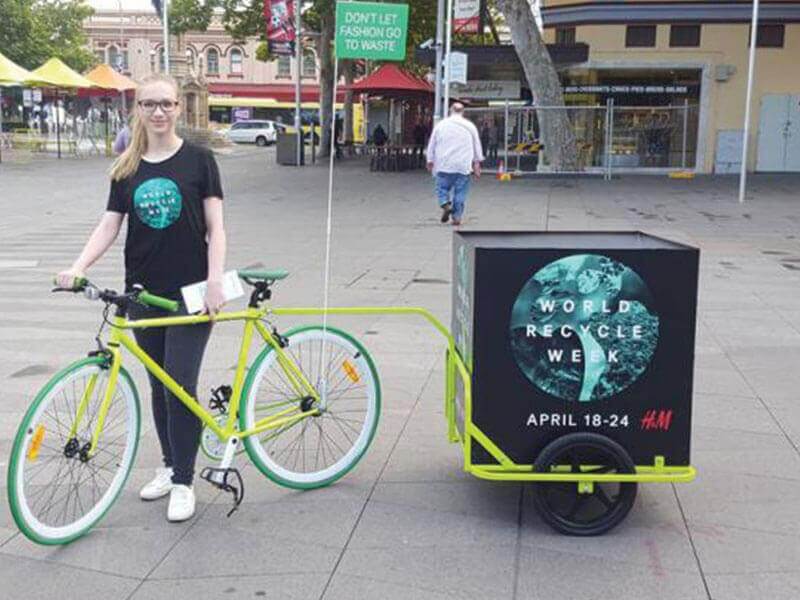
Mobile billboards are out-of-home advertisements that move every which way because they’re displayed on vehicles of any kind. Often referred to as a form of guerrilla marketing, mobile billboard advertising uses vinyl posters or electronic screens to present advertising to consumers along directed routes of traffic. Sometimes positioned outside of major events or at busy intersections, mobile billboards alert people of products or services that best fit the vibe of the location they’re in. Many mobile billboards are equipped with retargeting technologies to optimize maximum value and exposure for the client and their business. We can understand the basics of mobile billboards, but what are the specifics? Let’s take a closer look at the way mobile billboard advertising works to get the clearest results for businesses, and the most positive responses from viewers.

How Mobile Billboards are Rented
Mobile billboard vehicle rates are competitive, as they’re dependent on the size, design, and longevity of the campaign. Most companies will lease mobile billboard trucks on a 4-week basis to begin with, but some clients will request a 52-week contract because of the longer timeline and lifespan of their ad. A mobile billboard company will usually have partnerships with trucking or rented vehicle companies that will provide them ad space on their wheels at a fee. Clients wanting to advertise will typically consult with the mobile billboard company about their project, and the mobile billboard company will make the necessary steps, with the vehicles they have on hand, that will bring the advertising to life.
Static mobile billboards will usually cost about $300-1000 per truck/per day but, depending on the contract signed, the rate may be at a better value. Digital mobile billboards, equipped with LED lighting, will typically run around $700-1800 per truck/per day but, the same as with static, rates may change due to the timing and the market of the campaign. Digital mobile billboards will always be more expensive to rent because of the technology put into it, and the fact that the advertised messages can change depending on the screen time allotted to them.

How Mobile Billboards Deliver Results
Compared to other advertising channels and other out-of-home deliverables, mobile billboards are more cost effective ways to promote a brand or service. When there’s a specific location or time to target the right people, mobile billboards can swoop in to meet the right eyes and capture the most suitable demographic. A typical poster or billboard doesn’t stand out as much as a mobile billboard. Most people aren’t used to seeing messages on wheels, and pedestrians will be drawn to the different kinds of catchiness on the streets.
Mobile billboards are an ad channel that doesn’t have a lot of competition, which works as an advantage in delivering solid results. Billboards placed on buildings or banners in shopping malls face more cluster and fight for ad space, but mobile billboards are vehicles that are guaranteed to stand out in an outdoor space. While people are too busy to really pay attention to other out-of-home advertising due to its lack of mobility, mobile billboards work to hold their direct train of thought.
Mobile billboards can’t be turned off, and they live in spaces where consumers are already travelling in. According to Outdoor Advertising Magazine, 96% of people surveyed believe mobile advertising was more effective than traditional outdoor advertising. According to the Arbitron National Car Study, truck and trailer billboard advertising achieves up to a 97% retention rate and 68% of consumers make purchase decisions while driving in their cars. Due to these statistics and more advantages, it’s clear that mobile billboards deliver superior results.

How Audiences are Captured
After looking at how mobile billboards deliver results simplistically and statistically, it’s important to pinpoint exactly how certain demographics become prime targets. All in all, mobile billboards are more memorable as out-of-home displays because they stand out in common, or uncommon, spaces. According to a study by APN, an ad that is on-the-go has a 45% higher peak exposure than static ads. Adding to this, the size of mobile billboards matters in retaining memory in viewers. A typical 10 ft high by 22 ft wide message can’t be missed, especially on street level.
Mobile billboards have the ability to infiltrate a specific market on a hyper-local level through planning specific routes by the means of intelligent mapping software and GPS signals. They can also target based on consumer interests. In saying that, mobile billboards can arrive outside of sports game highly targeting fans leaving the stadium. This form of audience segmentation makes for the best impressions. Adding to this, audiences can be captured through their smartphones in the vicinity of a mobile billboard. Targeted ads from the advertised company can hit their mobile devices through GPS enabling and WiFi making sure the message lasts longer.

After looking at how mobile billboard space can be rented, how it delivers meaningful results, and how audiences can be captured by the advertising, it’s found that mobile billboard advertising is an effective way to promote a service. Rather than working in mysterious ways, mobile billboards are expressive, bold, and a crowd pleaser. Everyone knows when one is coming ’round the mountain.


